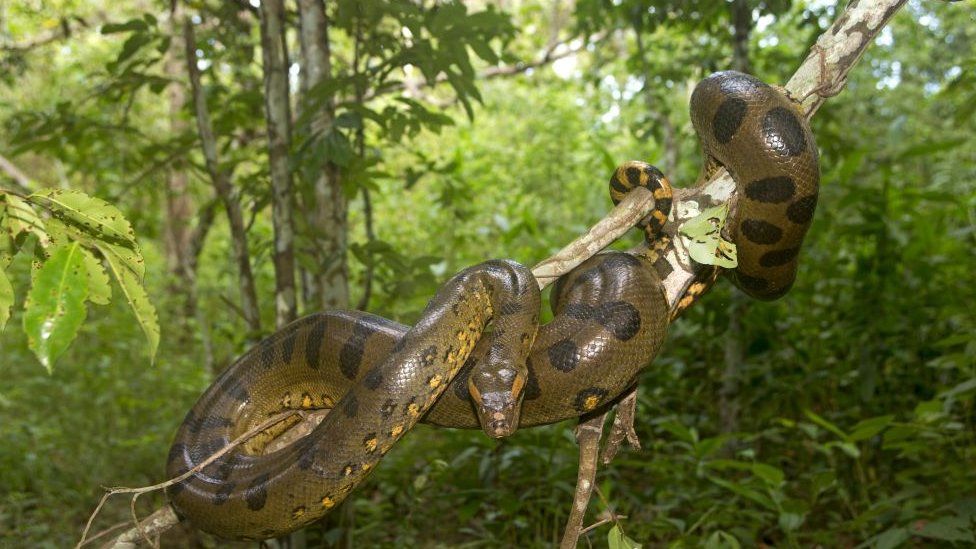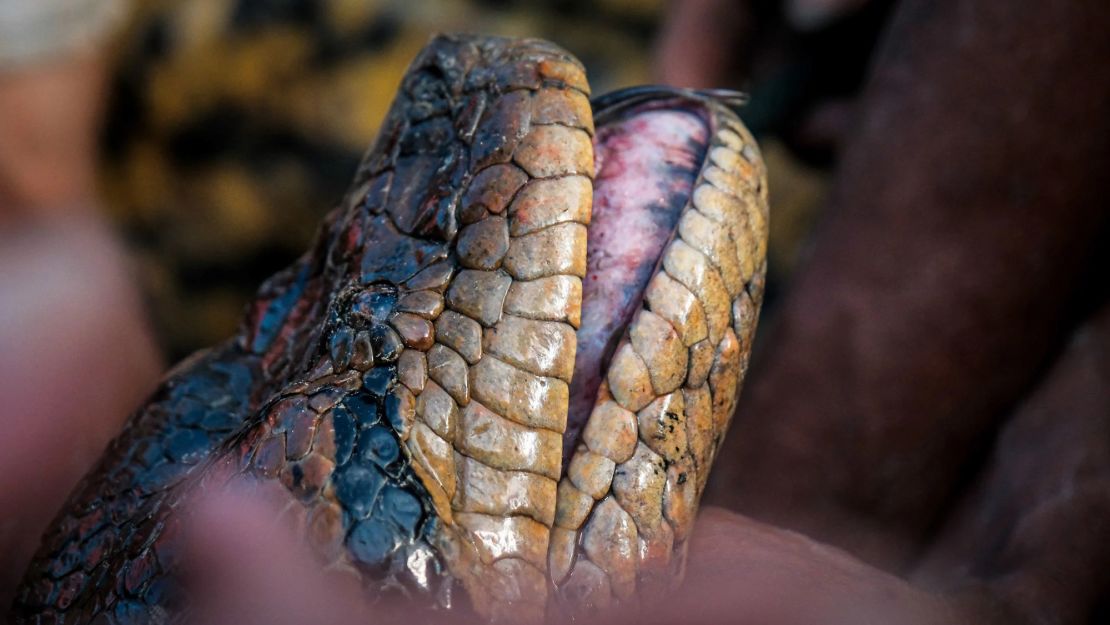
Scientists studying in the Amazon jungle found a new species of snake, rumoured to be the world’s largest.
A team from the University of Queensland travelled to the Ecuadorian Amazon to search for the previously undocumented northern green anaconda (Eunectes akayima), following an invitation from the Waorani people to observe anacondas “rumoured to be the largest in existence,” according to the scientists.
The team accompanied the hunters on a 10-day expedition to the Bameno region of Baihuaeri Waorani Territory, before paddling down the river system to “find several anacondas lurking in the shallows, lying in wait for prey,” according to Professor Bryan Fry, a biologist from the University of Queensland who led the team.
Anacondas are giant, non-venomous constricting snakes found in or near water in warm parts of South America.
“The size of these magnificent creatures was incredible – one female anaconda we encountered measured an astounding 6.3 metres (20.7 feet) long,” Fry said of the team’s discovery, which took place during filming for National Geographic’s forthcoming series “Pole to Pole with Will Smith.”

The crew also reported hearing anecdotal information that snakes as long as 7.5 metres (24.6 feet) and weighing 500 kilogrammes (1,100 pounds) had been observed in the vicinity.
According to the UK’s Natural History Museum, green anacondas are the world’s biggest snakes, with the heaviest ever recorded weighing 227 kilogrammes (500 pounds). It measured 8.43 metres (27.7 feet) in length and 1.11 metres (3.6 feet) in width.
While another species, the reticulated python, is often longer, reaching more than 6.25 metres (20.5 feet), it is lighter.
However, specialists investigating the critters revealed that the newly recognised northern green anaconda species separated from the southern green anaconda around 10 million years ago, with a genetic difference of 5.5%.
“It’s quite significant – to put it in perspective, humans differ from chimpanzees by only about 2 per cent,” Fry told the BBC. The findings are reported in the journal MDPI Diversity.
The scientists then set out to compare the genetics of the green anaconda with other specimens to assess them as an indicator species for ecosystem health, warning that the Amazon is under constant assault.
“Deforestation of the Amazon basin from agricultural expansion has resulted in an estimated 20-31 per cent habitat loss, which may impact up to 40 per cent of its forests by 2050,” Fry said in a statement.
